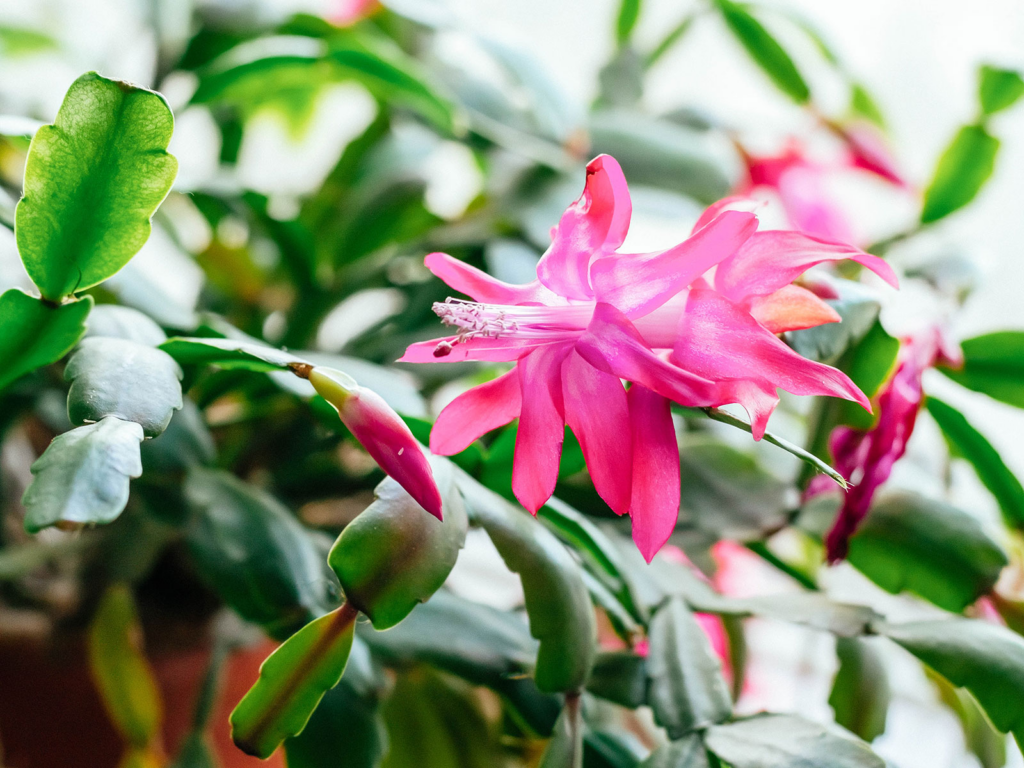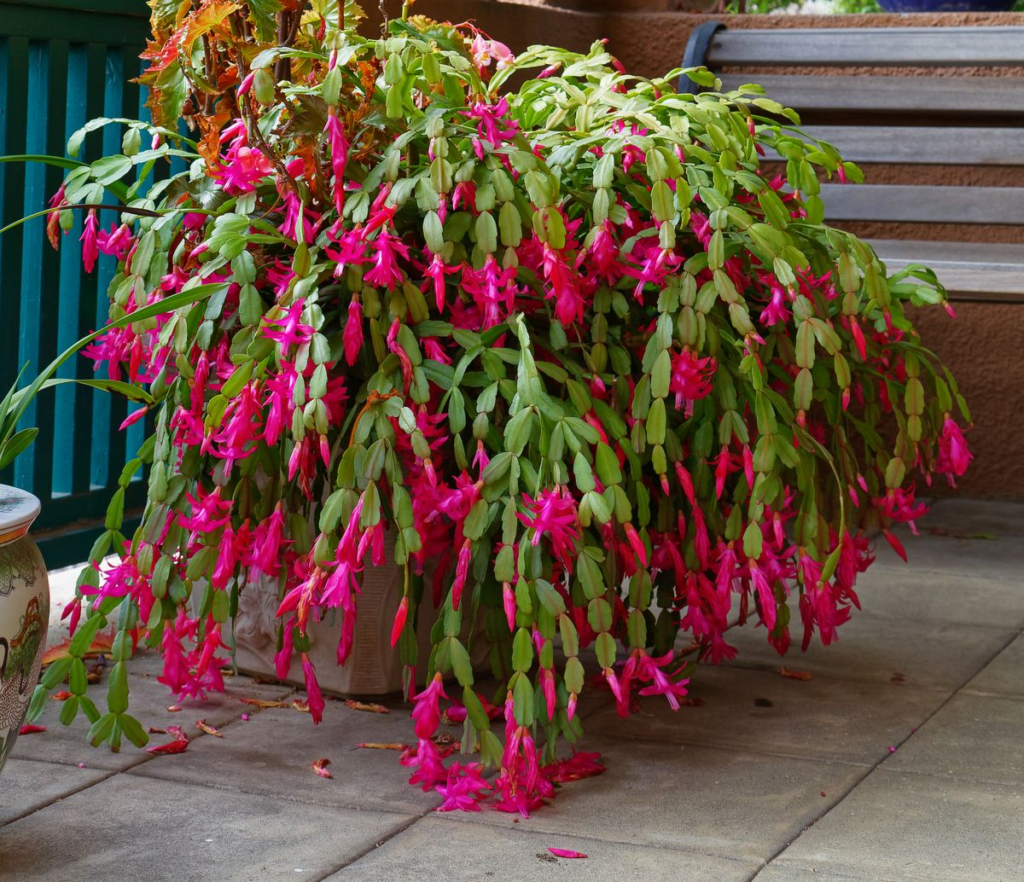How Long Does Christmas Cactus Live? How To Care For Christmas Cactus?
Are you planning to grow the holiday cactus named Christmas cactus in a home garden? Sounds amazing as this plant holds bold flowers that welcome everyone in the winter. But How Long Does Christmas Cactus Live? Hey folks! I’m Anna Scott, a Gardener by heart and Profession, started my Journey 15 years ago and Now I am teaching other gardeners as well to achieve their goals.
Christmas cactus is also scientifically known as Schlumbergera x buckleyi. The long-lasting essence of the Christmas Cactus will depend on the caring routine of the plant. Christmas Cactus will grow best in the best conditions like a good soil mix, accurate temperature range, diffused sunlight, the right amount of water, etc to survive. Feed the plant with its requirements during its growing season.
So, what are you waiting for? Let’s get started to know more about how long does Christmas cactus live and how to care for it to receive healthy results.

How Long Does Christmas Cactus Live?
A Christmas cactus will grow in the home garden as the best winter plant if it receives proper care. This plant has a lifespan of about 20 to 30 years (Specially Blooming). If you maintain the plant’s growth properly.
After this period, the plant may stop producing blooms. This does not mean that the plant is dead and has to be removed from the garden. The plant will even survive if it’s not blooming after 20 to 30 years.
This plant can survive well in the containers outside the garden area in shady locations. You can grow a variety of Christmas cactus at any time of the year either indoors or outdoors.
Proper care will lead the plant to bloom till last at its best and spread about 2 feet wide in a few years. It will begin to show you its blooms in the early winters.
How to Care for Christmas Cactus?
As mentioned if the plant is receiving proper care, then it cherishes you with its amazing results. So let’s get started to know how to care for Christmas cactus to enjoy this holiday plant. Below are the tips to follow:

Light
- The Foremost thing to feed this plant is a good amount of 4 to 6 hours of diffused sunlight during winter.
- This Plant can grow well in the sunlight and even in the shade, but it should not go in excess.
- It likes to grow in partial shade or diffused sunlight (Note: Though it can grow in any climatic condition).
- Exposing this plant to the full sunlight will cause damage to the plant by making its leaves yellow and pale.
Soil
- This plant prefers to grow in the loamy, sandy soil or a cactus mix for its well-being.
- It can adapt to any soil condition to grow in. so the soil does not play a major factor in the long-lasting of this plant.
- The ideal pH level for this plant lies between 5.5 to 6.2 which is good for its growth.
- Make use of peat moss by adding it to the general-purpose soil mix.
Water
- Water plays a major role in the growth of the plant. This plant requires water when the soil is completely dry.
- leaves will begin to shrivel if the plant’s soil is dry which shows the right time to water the plant.
- Let the excess water drain out from the drainage holes, then only water the plant.
- It is important to check the moisture of the soil by inserting a finger inside the soil about 2 inches deep.
- If the soil feels dry to touch then water the plant, but if it is damp, then there is no need to water the plant.
- During summers, water the plant about 2 to 3 times a week and reduce the frequency during winters.

Temperature and Humidity
- The ideal humidity level for this plant lies between 70°F to 80°F(Especially during the growing months of April to September).
- At night, it requires 55°F to 65°F of temperature to grow after the buds are set.
- this plant requires a good amount of humidity to grow. If the humidity is less in your area, then invest in a humidifier to raise the humidity.
- Do not expose the plant to cold drafts, air venting, winds, etc as it will ruin the plant’s growth.
Fertilizer
- This plant needs fertilizer once time in a month and that to diluted water-soluble balanced fertilizer.
- Feed the plant with fertilizer when it is actively growing that is in the early spring and summer season.
- Do not feed the plant in the winter months as the plant is in its dormant period at that time.
- After the plant begins to bloom, then resume the monthly feeding of fertilizer to the plant.
Pruning
- This plant needs to be pruned after it flowers because the plant is in its growing season.
- Pruning the plant is important as it will help in encouraging new growth in the plant.
- Also, you have to twist the stems between the segments and make use of sharp and sterilized scissors to remove those segments.
- Do not remove more than one-third of the plant’s foliage. Pruning will help in maintaining a healthy shape and size of the plant.
Repotting
- Christmas cactus does not like to be repotted more often as the plant likes to be rootbound.
- Repot this plant every 3 to 4 years when you see that the roots are coming out from the drainage holes.
- Repot the plant during spring as it is the best time to repot any plant after the blooming ends.
- Do not repot the plant when the plant is in its active growing season.

Types of Christmas Cactus
The Christmas cactus is also known by other names like Easter cactus, Thanksgiving, etc. Though there are various varieties of Christmas cactus, some of the best varieties are as follows:
Thanksgiving cactus (Schlumbergera truncata)
- This plant will feed you with flowers during November.
- It blooms in various shades of pink, red, orange, white, peach, etc.
- The edges of its leaves are pointed which attracts everyone.
Christmas cactus (Schlumbergera russelliana)
- Christmas cactus will bloom at the end of December with its amazing white and magenta-colored blooms.
- It produces flat leaf segments in the plant.
Easter cactus (Rhipsalidopsis gaetneri)
- Last but not least, this variety produces star-structured blooms in the plant.
- It will bloom from March till May with an amazing fragrance.
Summing up the context
In this guide, you come to know that the Christmas cactus is also scientifically known as Schlumbergera x buckleyi. The long-lasting essence of the Christmas Cactus will depend on the caring routine of the plant. Christmas Cactus will grow best in the best conditions like a good soil mix, accurate temperature range, diffused sunlight, the right amount of water, etc to survive.
Feed the plant with its requirements during its growing season. I hope you have read the whole article fully so that you enjoy the long-lasting nature of the plant. I will come back with another informative guide soon. Till then safe gardening.
Thanks for reading! Happy Gardening!
FAQs
Can a Christmas cactus get too old?
Yes, the Christmas cactus is a low-maintenance plant that is easy to grow. It will bloom for various weeks in your garden area. This plant can ling up to 100 years if you feed this plant with proper requirements.
Do Christmas cactus multiply?
Yes, the Christmas cactus does multiply after you take the cuttings from the plant and propagate it to another container.
Do Christmas cactus bloom every year?
Yes, this plant will bloom every year like other succulents in your home garden. Usually, it tends to bloom in the spring season. Place the plant near the east-facing window for better results. Also, the right temperature will help the plan to grow at its best.


